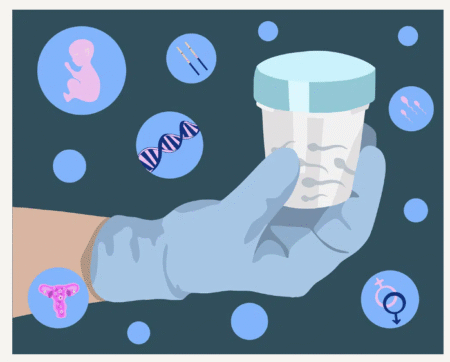Sperm Freezing
Sperm Freezing
Sperm freezing, or cryopreservation, is a process in which sperm are frozen at extremely low temperatures (-196°C) and stored for future use in assisted reproductive technologies (ART). This method allows men to preserve their fertility for various medical or personal reasons.
Who Should Consider Sperm Freezing?
Sperm freezing is recommended for:
- Cancer patients prior to chemotherapy or radiotherapy
- Men in high-risk occupations (e.g., exposure to chemicals or radiation)
- Individuals planning to undergo vasectomy
- Men with declining sperm quality
- Those wishing to delay fatherhood until an older age
- Individuals undergoing gender-affirming surgery, who want to preserve the possibility of biological parenthood
- Patients with autoimmune diseases or undergoing organ transplants, where immunosuppressive drugs are required
- Men with ejaculatory disorders (e.g., retrograde ejaculation), where sperm can be retrieved medically and frozen
- Those planning to travel or migrate to regions with limited access to medical care
- Anyone wishing to preserve high-quality sperm while young as a fertility insurance for the future
Steps of the Sperm Freezing Process
Step 1: Specialist Consultation
- You’ll meet with a urologist or fertility specialist to review your medical history, current conditions, medications, and family background.
- Required tests will be ordered, typically including:
- Infectious disease screening (HIV, hepatitis, etc.)
- Semen analysis (spermogram)
Step 2: Preparation Before Sample Collection
To ensure the best-quality sample, follow these guidelines:
- Abstain from ejaculation for 2 to 7 days prior to collection.
- Avoid alcohol for at least a week beforehand.
- If you frequently use hot baths or saunas, discontinue for at least two months before collection.
- In some cases, antioxidant supplements may be prescribed to improve sperm quality.
Step 3: Sample Collection
Sperm collection can be done in several ways:
- Standard method: Through masturbation, in a private collection room (with or without partner assistance)
- Intercourse using a special condom that is non-spermicidal and safe for collection
- Surgical retrieval methods such as TESA (Testicular Sperm Aspiration) using a fine needle
Step 4: Laboratory Processing
Once the sample is received, the lab begins immediate processing:
- Visual evaluation of color, viscosity, and volume
- Centrifugation to isolate healthy, motile sperm
- Washing and concentration of the sperm sample
- Accurate assessment of sperm count and motility
Step 5: Freezing Process
This delicate step requires precision and care:
- A cryoprotectant agent is added to protect sperm from damage during freezing.
- The sample is gradually cooled. Advanced techniques like vitrification (rapid freezing) may be used for better outcomes.
- The processed sample is stored in liquid nitrogen at -196°C.
Step 6: Storage
Samples are securely stored in a controlled environment:
- Each sample is placed in a labeled cryovial or straw with accurate identification.
- Nitrogen storage tanks are monitored with automated alarm systems.
- Patient information is recorded confidentially in a secure database.
When to Use Frozen Sperm
When you're ready to use your frozen sperm:
- The sample is thawed under controlled conditions.
- Its quality is reassessed.
- Additional tests, such as DNA fragmentation analysis, may be performed if needed.
- The sperm is then used in assisted reproductive techniques like IVF or ICSI (Intracytoplasmic Sperm Injection).
Important Considerations
- It’s advisable to freeze at least two separate samples taken on different days.
- Sperm collected at a younger age generally have higher quality.
- Frozen sperm can be stored for many years without losing viability.
- You may request to transfer your samples to another fertility center at any time.
Is Sperm Freezing Successful?
The success of sperm cryopreservation depends on several factors, including the initial quality of the sperm and the method of fertilization used later. In general, the success rate for men under 35 is around 90%.

